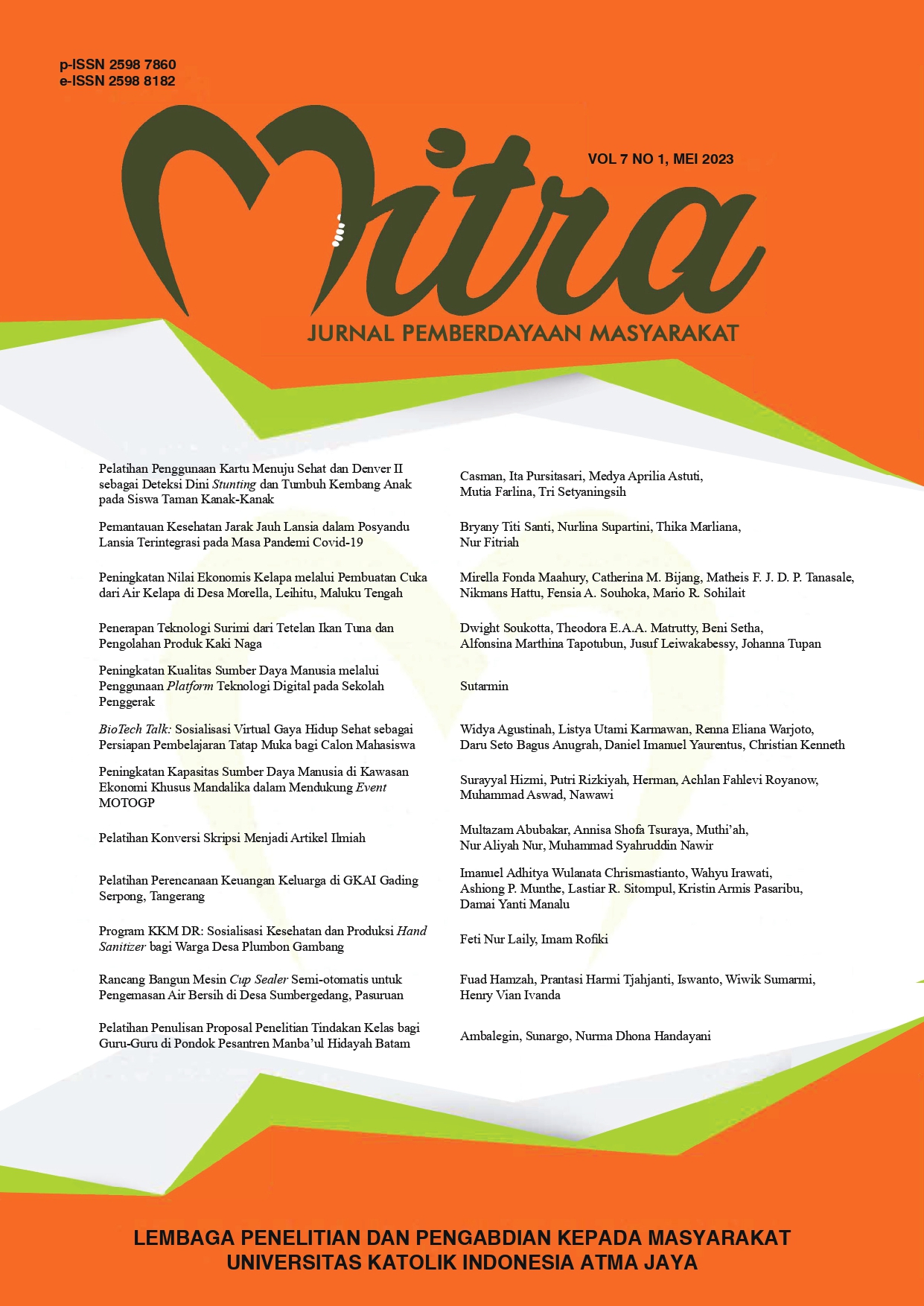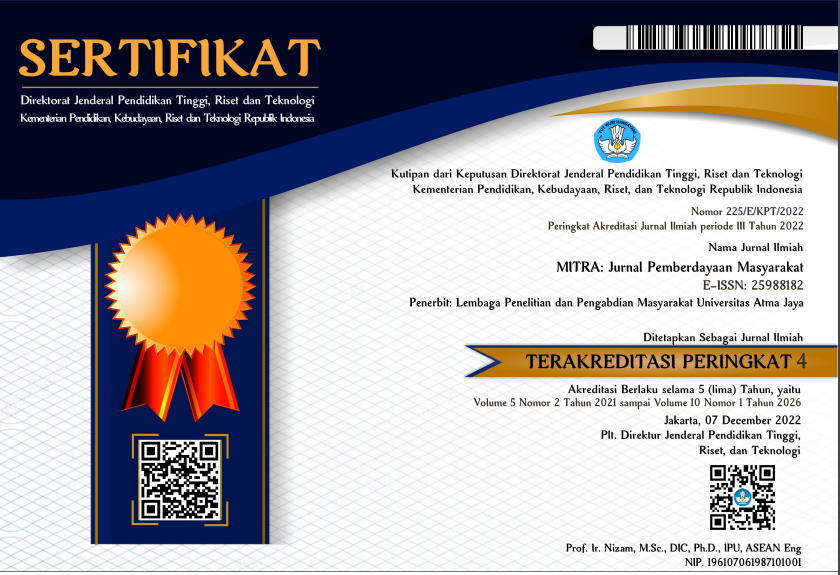Increasing the Economic Value of Coconuts through Vinegar Production from Coconut Water in Morella Village, Leihitu, Central Maluku
DOI:
https://doi.org/10.25170/mitra.v7i1.3213Keywords:
coconut water; vinegar; morella; economic value; trainingAbstract
Vinegar is a seasoning that gives food a sour taste. Vinegar is obtained from the fermentation of ethanol by bacteria anaerobically. Ingredients that can be used to make alcoholic fermentation include dates, rice, and coconut water. Young coconut water is directly consumed, while coconut water from ripe fruit is disposed of as waste. Morella village is located on the coast of the island of Ambon, where coconut plants are in abundance. The abundance of this coconut plant is directly proportional to the old coconut water that is dumped into the environment. To decrease the coconut water waste, it is necessary to conduct training on making vinegar from coconut water for the people of Morella village. This community service was carried out based on counseling and training on making vinegar for the Morella Village people. Counseling was done to convey the benefits of Vinegar and how to make it. The training was carried out by demonstrating the procedure for making vinegar and providing tools and materials to partners and videos to produce vinegar independently. The results of vinegar products from Morella Village are reported to the service team and used as evidence of the success of the vinegar-making training. The results provide information that vinegar are products that the people of Morella village can cultivate as an opportunity to increase their economy.
References
Hasanuddin, H., Dewi, K. H., & Wulandra, O. (2012). The use of coconut water for raw material of vinegar. Jurnal Agroindustri, 2(2), 53–61. https://doi.org/10.31186/j.agroind.2.2.53-61.
Hiryanto, H. (2017). Pedagogi, andragogi dan heutagogi serta implikasinya dalam pemberdayaan masyarakat. Dinamika Pendidikan, 22(1), 65–71.
Irnia, & Hidayat, N. (2001). Pembuatan asam asetat dari air kelapa secara fermentasi kontinyu menggunakan kolom bio-oksidasi (Kajian dari tinggi partikel dalam kolom dan kecepatan aerasi). Jurnal Teknologi Pertanian, 2(1), 51–57.
Maahury, M. F., Bijang, C. M., Siahaya, A. N., Hasanela, N., & Sohilait, M. R. (2021). Pelatihan pembuatan virgin coconut oil (VCO) pada Desa Oma Pulau Haruku Maluku Tengah. Jurnal Warta Desa, 3(2), 125–129.
Natsir, H., Arif, A. R., Arfah, R. A., Zakir, M., St Fauziah, S. F., & Budi, P. (2020). Pelatihan pengolahan air kelapa menjadi kecap di Desa Mattiro Deceng, Kecamatan Tiroang, Kabupaten Pinrang. Jurnal Dinamika Pengabdian (JDP), 6(1), 103–115. https://doi.org/10.20956/jdp.v6i1.10009.
Palungkun, R. (1992). Aneka produk olahan kelapa. Penebar Swadaya.
Pambayun, R. (2002). Teknologi pengolahan nata de coco. Kanisius.
Priasty, E. W., Hasanuddin, & Dewi, K. H. (2013). Kualitas asam cuka kelapa (cocos Nucifera L.) dengan metode lambat (slow methods). Jurnal Agroindustri, 3(1), 1–13.
Riyani, C. (2018). Pengaruh penambahan ragi roti dan ragi tape pada pengolahan cuka kelapa dengan metode lambat. Agrisains, 04(1), 16–20.
Rodiah, S. A., Putra, A. W., Advinda, L., & Putri, D. H. (2021). Pembuatan nata menggunakan air kelapa. Prosiding SEMNAS BIO 2021, 01, 748–755.
Yamin, M., Khairuddin, Japa, L., & Artayasa, I. P. (2022). Pemanfaatan air buah kelapa untuk pembuatan nata de coco pada kelompok wirausaha mandiri (KWM) di Desa Gunungsari, Kabupaten Lombok Barat. Jurnal Pengabdian Magister Pendidikan IPA, 5(2), 59–64. https://doi.org/10.29303/jpmpi.v5i2.1573
Downloads
Published
How to Cite
Issue
Section
License
Copyright (c) 2023 Mirella Fonda Maahury, Catherina M. Bijang, Matheis F. J. D. P. Tanasale, Nikmans Hattu, Fensia A. Souhoka, Mario R. Sohilait

This work is licensed under a Creative Commons Attribution-NonCommercial-ShareAlike 4.0 International License.
This license allows reusers to distribute, remix, adapt, and build upon the material in any medium or format for noncommercial purposes only, and only so long as attribution is given to the creator. If you remix, adapt, or build upon the material, you must license the modified material under identical terms.







_.jpeg)




.png)
2.png)
.png)
.png)



